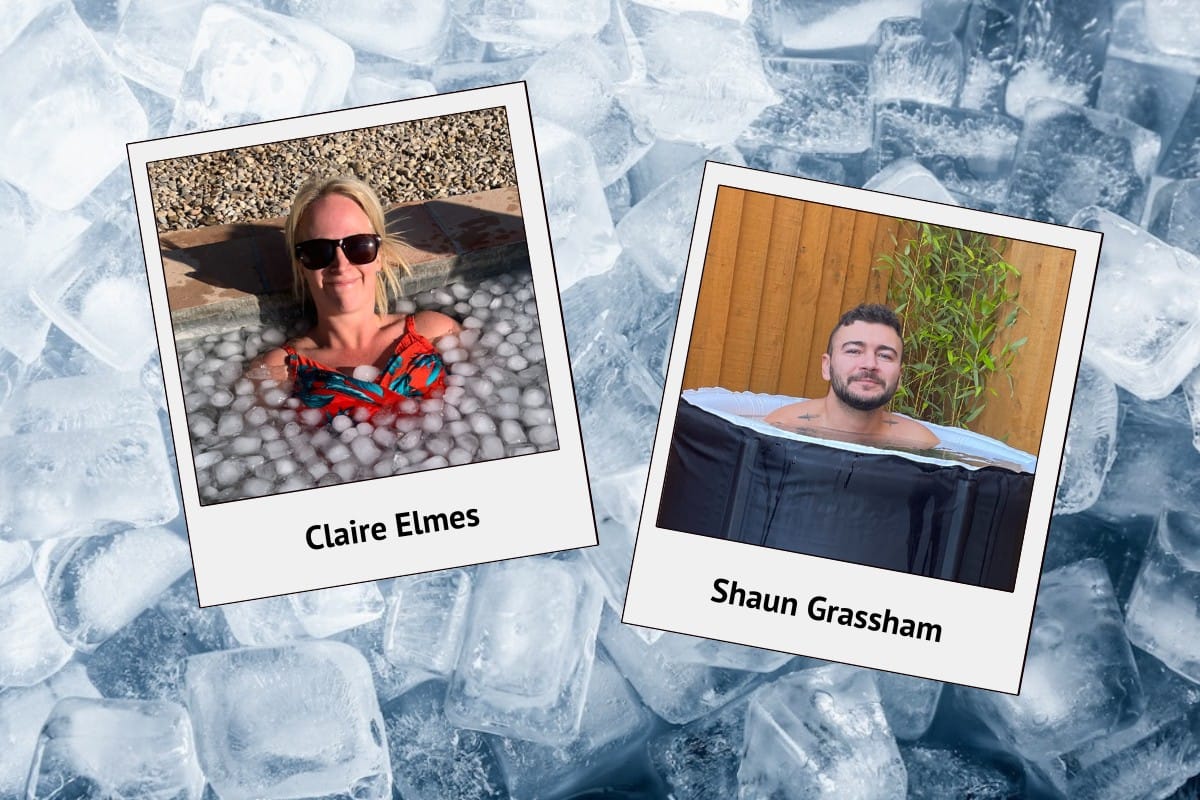What’s behind the ice bath trend, and could taking a freezing dip be the key to cooling a frazzled mind?
updated on Jun 29, 2024

One therapist tell us why ice baths are a staple part of her wellbeing routine
“I have always loved cold water immersion, often sea swimming and having cold showers throughout the year. During covid, I set up a cold water challenge, where we focused on the benefits of having cold showers, and increasing time under a cold shower to maximise health benefits and regulate emotional states. I wanted more, and began as an ice bath facilitator following my breathwork training in 2021. I attended a workshop and I was hooked.”
Claire Elmes is a breathwork and ice bath facilitator, as well as a therapist and coach. As she describes, ice baths very quickly became a staple in her wellbeing routine – and she’s not alone, as in the past five years interest in cold water therapy in the UK has increased by 633%, according to data from digital marketing agency Antlerzz.

Considering the cause behind the boom, Claire first points to the popularity of Wim Hof (AKA The Iceman) who has 3.5 million followers, and whose BBC One series caused a noticeable increase in the requests she was receiving for classes. But she also points to the benefits that she and others enjoy.
“The benefits of ice baths are well documented, but for me the biggest is how it activates the autonomic nervous system, changing breathing patterns, and breath control altering heart rate variability and triggering the body’s stress response (sympathetic nervous system). When you undertake a breathwork session and then do an ice bath, you take control of your breathing patterns, which, in turn, can help you to switch between the sympathetic nervous system and parasympathetic (rest and recovery).
“We need both systems to function, but many people – especially when stressed, overwhelmed, anxious, or getting regular panic attacks – don’t feel they can control the switch between the two. Along with all the physical perks, this benefit alone helps many clients I work with start to regulate their emotional states (you can even run hands under cold water).”
Because the widespread use of ice baths for wellbeing is a fairly recent trend, most of the evidence is anecdotal, and studies tend to be fairly small in scale. But results so far do indicate a positive correlation. In 2008, a study published in the journal Medical Hypotheses examined how cold showers may be used to treat depression. What the researchers saw was that cold hydrotherapy did relieve depressive symptoms effectively, and did not have any noticeable side-effects – though further research is needed to confirm these results.
More recently, in a Dutch study of 3,000 participants published in PLOS ONE, researchers found that people who took a daily cold shower were off work with self-reported illness 29% less than those who had warm showers. Other hypotheses into why people feel such a powerful effect include cold water potentially increasing feel-good hormones such as endorphins, and decreasing the stress-inducing hormone cortisol. Some say ice baths produce a placebo effect – though that doesn’t mean the resulting good feelings aren’t real. So, with fairly limited research behind it, the best way to figure out whether or not it’s right for you is to simply give it a go.
At the start of January, ice bath brand The Ice Co invited followers to take part in a 30-day challenge. Shaun Grassham was one of the participants.

“I’d seen a lot of celebrities using ice baths, which led me to read about them. When I read the potential benefits, I couldn’t wait to give it a try,” he says. “I started my ice bath journey in January and, trust me, the last thing you want to do before work at 6am, especially in the middle of winter, is jump into freezing cold water. But once you’ve prepared yourself and taken that plunge, each day it gets easier. I started with short stints, around 20 seconds to begin with, but I’m built up to the three minutes-plus mark now.
“It has definitely supported my mental health. It strengthened my mindset for the day and helped me build a routine. Starting my day off with an ice bath improves my motivation levels for the rest of the day, as first thing I have overcome a task which I don’t really want to do. Everything that follows feels like a breeze!”
“I have seen the most life-changing experiences for people who have participated in ice baths and cold showers regularly,” says Claire. “I personally enjoy ice baths because it gives me a buzz and energy that helps me focus and be more productive. It also allows me to release the stress and get my body back on track. Even my kids enjoy a cold water burst after a shower, and I notice the difference in their ability to emotionally regulate.”
Are you tempted to give it a go and take the plunge yourself? You certainly don’t need to splash the cash to get all the gear right away. A simple way to begin is by turning down the temperature of your shower little by little until it runs cold. When you’re feeling confident, look into ice baths and cold swimming near you, and follow the guidance of professionals like Claire. You never know, taking a cool dip could be your next transformative wellbeing hack.
